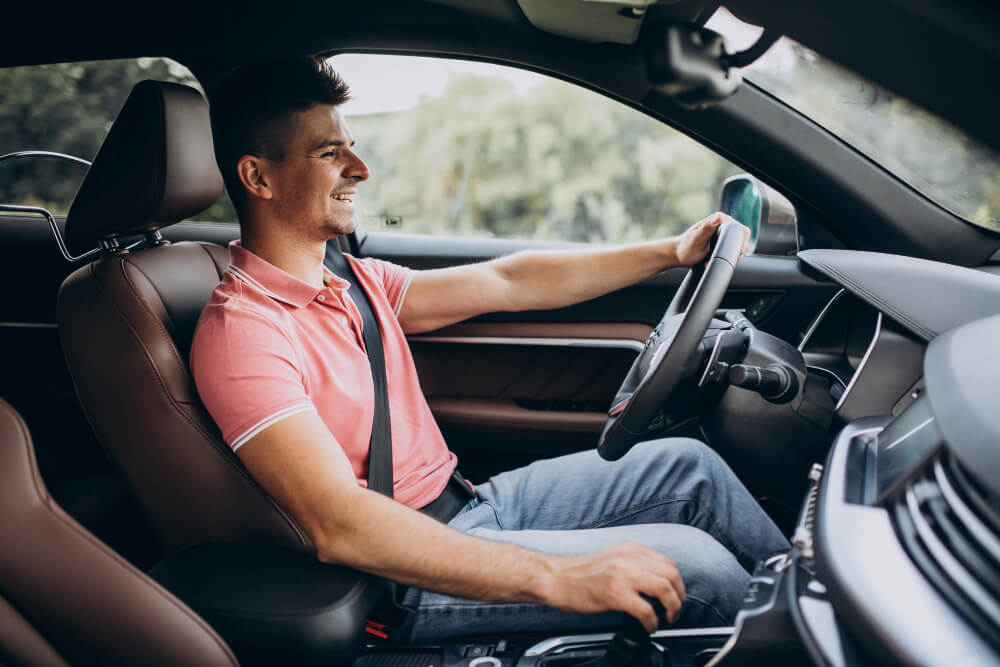
11 Excellent Ways of How You Can Save Fuel While Driving
Those who drive petrol and diesel are currently having to pay more and more for refuelling. Our fuel-saving tips show how best to counteract the record prices at the petrol pump and how to save fuel when driving.
If you want to save fuel when driving, you can achieve a lot with small measures and thus effectively protect the environment and your wallet. A lot can be achieved by optimizing your driving style in particular, without completely sacrificing driving fun. Here are the tips!

SAVE FUEL WHEN DRIVING: ELEVEN SIMPLE TIPS
Optimizing your own driving style with discipline
Optimizing your driving style is still the most effective and easiest way to save fuel. Motorists, especially on the freeway, consume a lot of fuel unnecessarily due to high speeds. The rule of thumb is: 70 to 80 per cent of the maximum speed of the respective vehicle should not be exceeded, as consumption then increases disproportionately.
Close the window!
Roof and bicycle racks and roof boxes increase air resistance and thus fuel consumption. So remove it immediately after use to save fuel when driving. In addition, rear racks on a trailer hitch are more fuel-efficient than roof racks. Open windows also increase air resistance – it is better to keep them closed, especially on longer journeys. In city traffic, on the other hand, lowered windows instead of operating the air conditioning system can bring fuel savings.
The correct speed protects the engine and saves fuel
Driving at low revs can also help to save fuel. This not only saves up to 30 per cent but also protects the engine at the same time. The least fuel is usually consumed between 1500 and 2500 revolutions per minute. Especially with the petrol engine, you can step on the gas to pick up speed – preferably in high gear. Less fuel is consumed here than with leisurely and therefore longer acceleration.
Pay attention to regular maintenance of important components
Anyone who owns a vehicle should also pay attention to the regular maintenance of the car. In modern cars, the need for maintenance is sometimes displayed automatically, for example, if the oil or the air filter needs to be changed. Both can also affect fuel consumption.
Optimized tire air pressure: combating rolling resistance
Optimum tire air pressure is also very important for saving fuel when driving. The rule of thumb is: rather too much pressure, but never too little. In any case, it is advisable to moderately increase the tire pressure specified by the manufacturer. Even a 0.3 bar reduction in air pressure in the tires increases rolling resistance and thus leads to unnecessary additional fuel consumption. In addition, drivers should always make sure that they change from winter to summer tires in good time, because tires for the cold season usually increase rolling resistance
with their softer rubber compound.
Reducing overall weight increases efficiency
Unnecessary ballast should be avoided. Anyone who reduces the load and thus the overall weight of the vehicle saves fuel. Because the more mass is accelerated to a higher speed, the more energy is required – especially in city traffic with constant stop-and-go. 100 kilograms of additional weight costs around half a litre of fuel over 100 kilometres.
Proactively limit braking
Braking wastes energy. You should therefore drive with foresight and use the braking effect of the engine for as long as possible. If you roll up to a red traffic light, for example, you should take your foot off the gas and use the engine brake in good time. As a rule, cars are equipped with an overrun cut-off, which completely switches off the sprayer when overrun. Modern vehicles with a sailing function, which decouple and completely switch off the engine when coasting, can do this even better.
Turn off power-consuming devices such as air conditioning
Turning off electrical consumers and devices also helps to save fuel. Lighting, air conditioning, various control units, seat and steering wheel heating and more draw their energy from the on-board network, which is supplied by the alternator. This in turn is driven by the engine. Therefore, switching on electrical devices in the car consume additional fuel. An air conditioner, for example, consumes between 0.3 and 1.8 litres of fuel per 100 kilometres if you don’t want to do without the luxury of a cool interior in midsummer.
Just skip one or the other car trip
The crucial question that car drivers never like to hear is: “Do you have to drive at all?” No, you don’t need to. After starting, a mid-range car can use around 30 to 40 litres of fuel per 100 kilometres. Only after four kilometres does consumption return to normal.
Switch off the motor specifically
When your car’s engine is off, it doesn’t use any fuel. It is therefore worth switching off the engine if you are waiting for a long time. In principle, you can switch off the engine after a waiting period of more than twenty seconds.
The following applies: If it is foreseeable that you will have to wait longer at a red traffic light, you want to stop briefly or you are stuck in traffic, you should always switch off the engine of your car. This way you can save quite a bit on fuel costs.
Check tire pressure
Tire pressure is very important when it comes to saving fuel. If the tire pressure is too low, there is higher rolling resistance. The resulting deformations of the tire generate additional heat and thus energy that is lost. Fuel consumption increases. Your car application on your phone can help you check that. Hence, you can get a mobile holder to keep a constant check. There are several other benefits of a mobile phone holder for your car.
It is important to constantly adjust the air pressure to the value recommended in the operating instructions. This also applies to your safety. Therefore, check the air pressure in your tires regularly. The tire pressure should never be higher than recommended in the owner’s manual for a full load.
To Conclude,
Now you know how you can save fuel when driving through your driving style and the condition of your car. It also makes sense to decide in favour of a car that consumes little fuel when buying a car. You shouldn’t also skip on these must-have car accessories and tech gadgets while driving.
Author Bio:
Hi, I am Mike Morleye. As a professional writer, I put together my writing skills to share knowledge on diverse topics in a readable, understandable and appealing format. Follow me back on Facebook, Twitter and LinkedIn.
